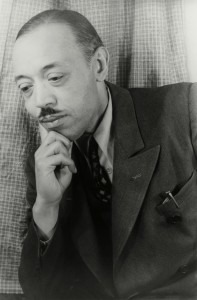
William Grant Still by Carl Van Vechten
One writer noted that, in keeping with many African-Americans of his generation, Still achieved many ‘firsts’: first African-American to have a symphony performed by a major symphony orchestra (1935, New York Philharmonic); first to conduct a major orchestra (1936, Los Angeles Philharmonic); first to conduct an orchestra in the Deep South (1955, New Orleans Philharmonic); first to have an opera (Troubled Island) produced by a major company (1949, New York City Opera); and first to have an opera (A Bayou Legend) broadcast on television (posthumously in 1981, PBS).
In keeping with all these firsts, let’s take a look at his Symphony No. 1, Afro-American, which he completed in 1930. It received its premiere in Rochester, NY, under the baton of one of Still’s greatest supporters, Howard Hanson, before progressing to the New York Philharmonic at Carnegie Hall and many other American orchestras. In the work, Still sought to show how the blues could achieve the highest musical level.

Howard Hanson
Still: Symphony No. 1, Afro-American: I. Longing (Moderato assai) (Fort Smith Symphony; John Jeter, cond.)
The second movement, Sorrow, is followed by Humor, which is the Scherzo of a classical symphony. In the third movement, in another first, Still brings a new instrument into the orchestra, the banjo, used until this time as a major image of African-American music. You’ll hear a melody that sounds like Gershwin’s I Got Rhythm, but again, this work predates that song.
III. Humor (Animato)
Gershwin and Still knew each other from their common work in jazz and on Broadway and admired each other’s work.
The final movement, Aspiration, consolidates the ideas used throughout the work and, at the same time, moves it to the future.
IV. Aspiration (Lento, con risoluzione)
The work is striking and thoughtful, and a long way from the Bohemian color of Dvořák and his New World Symphony. This work goes deeper into the feelings and beliefs, as well as the humor and longings, of a complicated society that was only beginning to find its place in the world.

